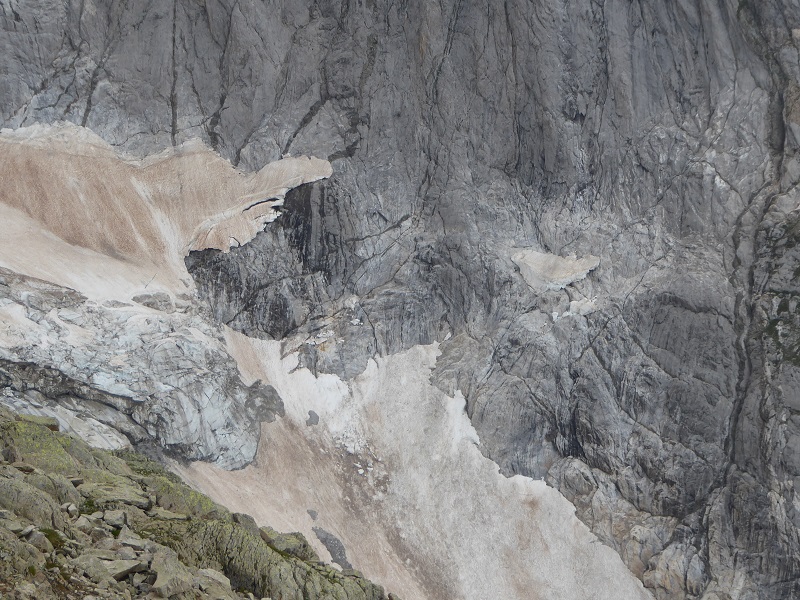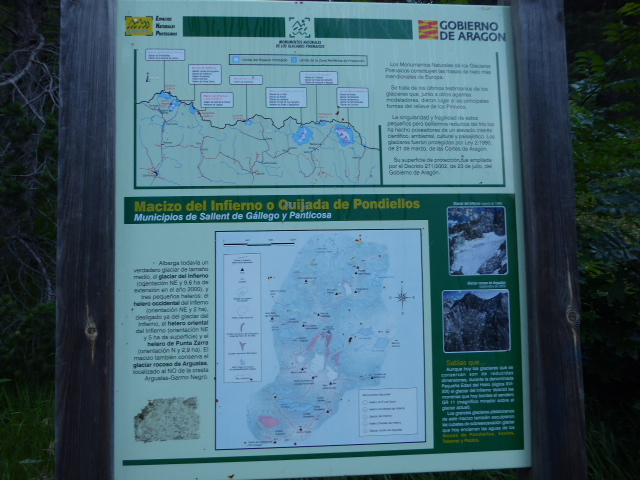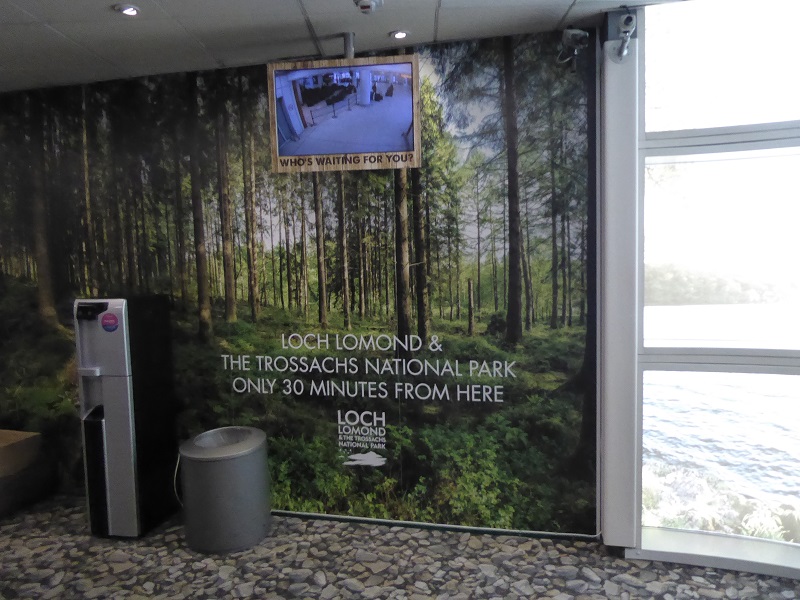
Between 18th and 21st September the Cairngorms National Park Authority are hosting the Europarc conference (see here) for “protected area professionals” . The theme of this year’s conference is “reconnecting young people with nature”. All attendees are being encouraged to bring a young person as part of the International Year of Young People and my guess is that the Scottish Government will feel bound by the presence of the conference in Scotland to announce a new initiative about how they hope to make it easier for young people to connect with nature. Whether this will have substance is another question.
A quick and cheap win for the Scottish Government would be to drop the camping byelaws, which have a disproportionate impact on young people. Instead they could give the money wasted on trying to prevent people from enjoying the natural environment to the Cairngorms National Park Authority to foster public transport initiatives which their National Park Partnership Plan identified as being key to enabling a wider range of people to enjoy the National Park. The underlying issues about access to our National Parks, however, are much more fundamental and, as Greece goes up in flames and Japan experiences record temperatures, are literally burning. This post takes a look at the challenges our politicians should be addressing based on my experience of a two week walking trip through the two National Parks in the central Pyrenees.
Transport contributes about a quarter of Scotland’s carbon emissions and, inspired and hassled by Calum, the 25 year old son of Dave Morris and Anne MacIntryre, our walking campanions, who urged us to put our money where our mouths were, we decided to try and reduce the carbon impact of our holiday by travelling to the Pyrenees by train. While more expensive and taking longer, it seemed the right thing to do and we had reckoned that by leaving Scotland at midday we should have time to walk up to a mountain hut the next day despite the poor public transport service up the Aspe Valley. In the event, the hassles we encountered would, I suspect, be enough to put most people off for life:
- The queuing and security checks for Eurostar were as bad as any airport.
- The Eurostar service was over two hours late – no explanation given – so we missed the sleeper we had booked to Toulouse and had to stay the night in Paris (which Eurostar did agree to pay for)
- We spent the next day trying to catch up and set out on the 6 hour walk up to the Refuge d’Ayous at 3.30pm driven by the knowledge that this, and all the other refuges we had booked were full, so there was no leeway to change our schedule.
And then, after a thirteen day circular walk:
- The one bus a day from the Col de Comport back down the Aspe Valley failed to turn up. This had compensations, with our campanions being given a lift by a couple from Scotland – one of whom turned out to be a reader of Parkswatch! – while my partner and I had a couple of lifts from locals, one of whom told us their grandfather used to hunt bears and sell the meat in his butcher’s shop. The grandson wanted more bears – there are only a dozen or so left in the Pyrenees – and told us the “Stop Ours (bears)” graffiti on the way down the valley was the responsibility of local farmers.
- The local trains from the valley then turned out to have been cancelled due to landslides with only one bus replacement, and we ended up getting to Toulouse several hours later than planned with no time to look around that city.
- And then, after the ease of the TGV to Paris in the morning, the train to Glasgow the following evening was late. I was just thankful that I was not having to work the next day. At least Virgin offered us some financial compensation.
I don’t know if these experiences are typical but it would be interesting to find out if many of the European delegates to the Europarc Conference will be travelling the whole way to the Cairngorms by public transport. While the CNPA has to it credit negotiated a 30% discount for delegates for train fares in Scotland their assumption seems to be that delegates will arrive in Scotland by plane (see here). Its just too complicated and time consuming to do anything else and not good use of staff time. This illustrates the real problem. Until our governments make it quicker and easier to use carbon friendly travel options the burning and other consequences of the heatwave across Europe is just going to get worse.

In the Pyrenees, like Scotland and the Alps, there was considerable snowfall this year – a couple of passes in the first week were quite tricky and many people were wearing crampons – but not enough to reverse the disappearing glaciers which provide stark evidence of the impact of global warming. Official predictions are that the last glaciers in the Pyrenees will have disappeared by 2050 although many, such as the three former glaciers on the north side of the Infierno (photo above) seem to have already gone.

I was interested to learn that the Spanish Government had created specially protected areas around their remaining Glaciers almost twenty years ago although this has not been able to prevent their disappearance as global temperatures rise. Under the target temperatures which governments have agreed internationally are necessary to limit global warming, which are higher than those we experience at present, there would appear to be no place for glaciers in the Pyrenees. The really important question to my mind therefore is not how we should reconnect young people with nature – young people appear generally far more aware of the impact of global warming than older people – but rather how the current capitalist world economy is systematically destroying the natural environment and not only denying the opportunity for young people to experience it but jeopardising the very existence of future generations. Our National Parks, as official custodians of some of the most important remnants of that natural environment, have a key role to play in calling on Governments to introduce appropriate measures to prevent any further damage.
Unfortunately at present the Loch Lomond and Trossachs National Park Authority is part of the problem:


The irony of trying to sell the National Park to people arriving in Scotland by air, the form of transport most damaging to the natural environment our National Parks were set up to protect, appears to have escaped the LLTNPA completely. The “success” of these signs has been reported at Board Meetings without any questions being asked about whether the LLTNPA could be doing more to promote and improve more sustainable forms of transport. This is not just a Scottish problem: I saw no evidence that the French and Spanish National Parks saw the poor public transport there as being something they should be addressing.
In Scotland, this is not really surprising. The LLTNPA’s agenda is the same agenda as the Scottish Government’s civil servants whose whole focus is on attracting visitors to Scotland by air. Hence the Scottish Government’s commitment to reduce air passenger tax which has thankfully been blocked by the Greens. What appears to have been totally forgotten and fallen off the political agenda is that when the Channel Tunnel was first mooted Scotland was promised direct train services to Europe. Imagine getting on a sleeper early evening and waking up in the Pyrenees or the Alps the next morning or visitors from Europe doing the journey in the reverse direction and arriving at Loch Lomond or the Cairngorms after a good night’s sleep? We have the resources and know-how to make this possible, the problem is that vested interests (such as the airlines and car manufacturers) are too great and our politicians lack the will.
The Europarc conference provides an opportunity to discuss these issues. It would be good if the young people attending will be allowed to take a lead and set an agenda for what needs to be done at a European level to make access to our National Parks more sustainable, joined up and affordable.

Some interesting reflections on your experiences travelling to the Pyrenees, Nick, I can reinforce them a little.
We visited Japan last Autumn and for 3 weeks travelled everywhere (including into the mountains) by train, the occasional bus and by foot. The Japanese public transport system is what UK and Europe should aspire to. In all the dozens of train journeys we made we only had two minor delays:
– our Shinkansen was 10 minutes late on day due to a typhoon further south flooding the tracks – given that there were Shinkansen trains every 10 minutes or less on this line, a 10 minute delay was remarkable.
– a small local train was about 3 minutes late, due to a French party taking for ever to get themselves and their luggage onto the train. We saw the frustration in the train driver’s face!
A recent experience of ScotRail’s trains was in January this year when we had many people coming to Grantown on Spey for my mother’s funeral (she was 104!). Everyone who travelled (by various) trains had significant delays both ways – we even had to delay the start of the church service for over 30 minutes. There were no weather problems.
Another example of bad public transport in the Cairngorms is the bus service. Many visitors want to visit the Speyside distilleries, but the bus going north on the A95 stops at Tormore – yes a distillery – but no visitor centre! Why does the bus terminate at Tormore – it’s the Highland Council boundary and further north its into Moray – so much for having an integrated transport system.
Compared to Japan our public transport system is third world!